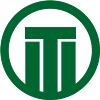A Blockchain-based Approach to Support an ISO 9001:2015 Quality Management System
Abstract
Quality is an essential element for any company that wants to be recognized successfully; because of this, the companies undergo a certification process under a quality standard such as ISO 9001 that allows them to improve the performance of its operation, differentiate itself from its competitors, achieve a better position in the market and export quickly. In this sense, making and maintaining such certification can be under high pressure over the company, up to become a source of corruption risk, since, in emerging markets, companies may be tempted to perform unethical practices such as falsifying or adulterating documents to maintain their certifications and the benefits derived from it. Besides, considering that the quality management system audit process is based on the verification made by a third party of the documents and records of the company against the quality standard, it becomes necessary to reinforce with technology the audit process to minimize this kind of risk. Given this, a software architecture for a quality management system supported in BPMN and Blockchain technology is proposed to guarantee the integrity and immutability of the system and information, which allows exposing any attempt at fraud and facilitates the audit process's automation.
Downloads
References
ISO, “The ISO Survey of Management System Standard Certfications -2017- Explanatory Note Background,” ISO, August, 2018.
J.-A. Medina-Merodio, C. De-Pablos-Heredero, L. Jimenez-Rodriguez, L. Fernandez-Sanz, R. Robina-Ramirez, and J. Andres-Jimenez, “A framework to support the process of measurement of customer’s satisfaction according to ISO 9001,” IEEE Access, vol. 8, pp. 102554–102569, 2020, doi: 10.1109/ACCESS.2020.2998434.
I. Betlloch-Mas, R. Ramón-Sapena, C. Abellán-García, and J. C. Pascual-Ramírez, “Implantación y desarrollo de un sistema integrado de gestión de calidad según la norma ISO 9001:2015 en un servicio de dermatología,” Actas Dermo-Sifiliográficas, vol. 110, no. 2, pp. 92–101, 2019, doi: https://doi.org/10.1016/j.ad.2018.08.003. [Online]. Available: https://www.sciencedirect.com/science/article/pii/S000173101830406X
I. Montiel, B. W. Husted, and P. Christmann, “Using private management standard certification to reduce information asymmetries in corrupt environments,” vol. 33. pp. 1103–1113, Sep-2012 [Online]. Available: http://doi.wiley.com/10.1002/smj.1957
J. A. LiPuma, S. L. Newbert, and J. P. Doh, “The effect of institutional quality on firm export performance in emerging economies: A contingency model of firm age and size,” Small Business Economics, vol. 40, no. 4, pp. 817–841, 2013, doi: 10.1007/s11187-011-9395-7.
B. Ullah and Z. Wei, “ISO Certification, Corruption and Firm Performance: A Cross-Country Study,” ISO, 2013 [Online]. Available: www.iso.org.
D. P. Kafetzopoulos, E. L. Psomas, and K. D. Gotzamani, “The impact of quality management systems on the performance of manufacturing firms,” International Journal of Quality & Reliability Management, vol. 32, no. 4, pp. 381–399, 2015, doi: 10.1108/IJQRM-11-2013-0186. [Online]. Available: http://www.emeraldinsight.com/doi/10.1108/IJQRM-11-2013-0186
R. Prada Ospina and P. C. Ocampo, “Quality in relation to models and management systems in the automotive sector. A bibliographic review,” Revista ESPACIOS, vol. 39, no. 16, 2018.
S. Johana, M. Marín, J. Luis, G. Díaz, J. Luis, and G. Reyes, “Sistema de gestión de calidad y certificación ISO 9001:2008-Limitantes y desafíos para las Pymes Quality management system and ISO 9001:2008 certification-Barriers and challenges to SMEs,” Revista ESPACIOS, vol. 39, no. 9, 2018 [Online]. Available: http://www.revistaespacios.com/a18v39n09/18390902.html
K. G. Dastidar, “Effects of Corruption and Incompetence in the Quality Monitoring Process,” in Oligopoly, Auctions and Market Quality, Springer, 2017, pp. 75–112 [Online]. Available: https://ideas.repec.org/h/spr/eclchp/978-4-431-55396-0_3.html
J. A. Rodríguez-Corzo, A. E. Rojas, and C. Mejía-Moncayo, “Methodological model based on Gophish to face phishing vulnerabilities in SME,” 2018 ICAI Workshops, ICAIW 2018 - Joint Proceedings of the Workshop on Data Engineering and Analytics, WDEA 2018, Workshop on Smart Sustainable Cities, WSSC 2018, Workshop on Intelligent Transportation Systems, WITS 2018 and Workshop on Empirical Experiences on Software Reuse, WEESR 2018, 2018, doi: 10.1109/ICAIW.2018.8555006.
R. M. Nivia, P. E. Cortés, and A. E. Rojas, “Implementation phase methodology for the development of safe code in the information systems of the ministry of housing, city, and territory,” in Computational science and its applications – ICCSA 2018, 2018, pp. 34–49.
“ISO 9001:2015(en), Quality Management Systems.” [Online]. Available: https://www.iso.org/obp/ui/{#}iso:std:iso:9001:ed-5:v1:es. [Accessed: 17-May-2020]
N. Orviz Martínez, A. Blanco González, and C. Del Castillo Feito, “Legitimacy and corporate reputation: Study from iso management system standards,” Revista Venezolana de Gerencia, vol. 25, no. 91, pp. 976–994, 2020, doi: 10.37960/rvg.v25i91.33177.
International Organization for Standardization, “Quality Management Principles.” ISO Central Secretariat, Geneva, p. 20, 2015.
H. Yin and P. J. Schmeidler, “Why do standardized ISO 14001 environmental management systems lead to heterogeneous environmental outcomes?” Business Strategy and the Environment, vol. 18, no. 7, pp. 469–486, 2009.
L. M. Fonseca, “From Quality Gurus and TQM To ISO 9001:2015: A review of several quality Paths,” International Journal for Quality Research, vol. 9, no. 1, pp. 167–180, 2015.
American Society for Quality, “What is ISO 9001:2015 – Quality Management Systems?” American Society for Quality, 2018.
The British Assessment Bureau, “ISO 9001: The Ultimate Beginner’s Guide.” The British Assessment Bureau, p. 20, 2016.
International Organization for Standardization, ISO 9001:2015 Quality Management System Requirements. Norway: GNV GL, 2015, p. 16.
Satoshi Nakamoto, “Bitcoin: A Peer-to-Peer Electronic Cash System.” https://bitcoin.org/bitcoin.pdf, 2008.
M. Peck, “Reinforcing the links of the blockchain.” IEEE, p. 19, 2017 [Online]. Available: BLOCKCHAININCUBATOR.IEEE.ORG
M. Gates, Blockchain: Ultimate guide to understanding blockchain, bitcoin, cryptocurrencies, smart contracts and the future of money. North Charleston, SC, USA: CreateSpace Independent Publishing Platform, 2017.
F. Milani, L. García-Bañuelos, and M. Dumas, “Blockchain and Business Process Improvement.” p. 4, 2016.
M. Crosby, Nachiappan, P. Pattanayak, S. Verma, and V. Kalyanaraman, “BlockChain Technology: Beyond Bitcoin,” Applied Innovation Review, vol. June, no. 2, pp. 6–19, 2016, doi: 10.15358/0935-0381-2015-4-5-222.
V. S. Yadav and A. R. Singh, “A systematic literature review of blockchain technology in agriculture,” in Proceedings of the international conference on industrial engineering and operations management, 2019, pp. 973–981.
R. Bettín-Díaz, A. E. Rojas, and C. Mejía-Moncayo, “Methodological approach to the definition of a blockchain system for the food industry supply chain traceability,” in Computational science and its applications – ICCSA 2018, 2018, pp. 19–33, doi: 10.1007/978-3-319-95165-2_2.
Q. Ding, S. Gao, J. Zhu, and C. Yuan, “Permissioned Blockchain-based Double-layer Framework for Product Traceability System,” IEEE Access, 2019, doi: 10.1109/ACCESS.2019.2962274.
C. Cortés, A. Guzmán, C. A. Rincón-González, C. Torres-Casas, and C. Mejía-Moncayo, “A proposal model based on blockchain technology to support traceability of colombian scholar feeding program (PAE),” in Applied informatics, 2019, pp. 245–256, doi: 10.1007/978-3-030-32475-9_18.
B. G. Choi, E. S. Jeong, and S. W. Kim, “Multiple security certification system between blockchain based terminal and internet of things device: Implication for open innovation,” Journal of Open Innovation: Technology, Market, and Complexity, vol. 5, no. 4, 2019, doi: 10.3390/joitmc5040087.
M. Teodorescu and E. Korchagina, “Applying Blockchain in the Modern Supply Chain Management: Its Implication on Open Innovation,” Journal of Open Innovation: Technology, Market, and Complexity, vol. 7, no. 1, p. 80, 2021, doi: 10.3390/joitmc7010080.
J. Vogel, S. Hagen, and O. Thomas, “Discovering Blockchain for Sustainable Product-Service Systems to enhance the Circular Economy,” 14th International Conference on Wirtschaftsinformatik, pp. 1493–1507, Feb. 2019 [Online]. Available: https://aisel.aisnet.org/wi2019/track12/papers/10
M. Kouhizadeh, Q. Zhu, and J. Sarkis, “Blockchain and the circular economy: potential tensions and critical reflections from practice,” Production Planning and Control, vol. 0, no. 0, pp. 1–17, 2019, doi: 10.1080/09537287.2019.1695925. [Online]. Available: https://doi.org/10.1080/09537287.2019.1695925
Neocapita, “The Logical Components of Blockchain – Neocapita – Medium.” 2017 [Online]. Available: https://medium.com/@neocapita/the-logical-components-of-blockchain-870d781a4a3a
Hyperledger.org, “Introduction to Hyperledger Business Blockchain Design Philosophy and Consensus.” p. 15.
S. Mery and D. Selman, “Make your blockchain smart contracts smarter with business rules,” Copyright IBM Corporation 2017, p. 21, 2017.
X. L. Liu, W. M. Wang, H. Guo, A. V. Barenji, Z. Li, and G. Q. Huang, “Industrial blockchain based framework for product lifecycle management in industry 4.0,” Robotics and Computer-Integrated Manufacturing, vol. 63, p. 101897, 2020, doi: https://doi.org/10.1016/j.rcim.2019.101897. [Online]. Available: https://www.sciencedirect.com/science/article/pii/S0736584519300596
J. E. Smith and Ravi Nair, “The architecture of virtual machines,” Computer, vol. 38, no. 5, pp. 32–38, May 2005, doi: 10.1109/MC.2005.173. [Online]. Available: http://ieeexplore.ieee.org/document/1430629/
C. Paris, “Quality Professionals: Embrace Blockchain or Perish.” 2018.
Copyright (c) 2021 ParadigmPlus

This work is licensed under a Creative Commons Attribution 4.0 International License.





